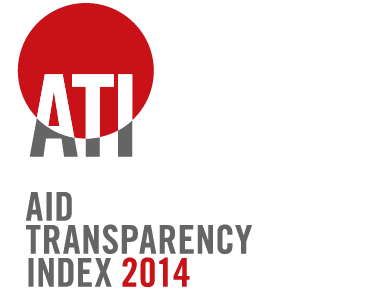United States
AID TRANSPARENCY ANALYSIS
[See the U.S. Brief for in-depth donor analysis.]
The U.S. is the largest bilateral DAC donor, spending over USD 26bn in 2012. The 2014 ATI assesses the transparency of five U.S. government agencies and one programme: The Department of Defense (DOD), the Department of State, the Department of the Treasury, the Millennium Challenge Corporation (MCC), the President’s Emergency Program for AIDS Relief (PEPFAR) and the United States Agency for International Development (USAID).
The U.S. has been a member of IATI since November 2011. In December 2012, the U.S. Government (USG) published its whole of government implementation schedule. In 2013, along with other G8 members (now G7), the U.S. reaffirmed its commitment to implement the common standard (including IATI) by 2015. In January 2013, it published to the IATI Standard for the first time. The U.S. is also a founding member of the Open Government Partnership and is in the process of implementing its second National Action Plan for 2013–2015, which includes a commitment to transparency and open data in foreign assistance. All agencies included in the 2014 ATI have published 2014 Open Government Plans outlining their activities on open government and transparency for the next two years. Through USAID, the government is piloting the use of aid information in partner countries. Three pilots have collected information on aid data usage in Bangladesh, Ghana and Zambia, with findings due this fall.
The State Department continues to host the Foreign Assistance Dashboard (“Dashboard”), and along with USAID, is the official USG lead on aid transparency. The Dashboard remains the sole mechanism for U.S. agencies to publish foreign assistance information to the IATI Registry. The Dashboard should be congratulated for recently adopting the IATI schema with a tailored U.S. extension. This important step, as outlined in a 2013 ATI recommendation, allows for information sharing from the agencies to the Dashboard and the Registry to be more systematic and orderly. For the first time some agencies, such as MCC, have begun to produce their own IATI XML files to comply with both the Dashboard and IATI requirenments.
The U.S. has expanded the number of agencies publishing to the Dashboard to 10, including the Departments of Agriculture, Defense, Health and Human Services, State, Treasury, Inter-American Foundation, MCC, Peace Corps, U.S. African Development Foundation and USAID. The publication from these agencies varies in quality and in coverage. While some agencies, like MCC, are publishing information on all compacts, covering most fields of the IATI Standard, others, such as DOD, are only publishing a few foreign assistance-related programmes in scant detail. Given this disparity, the efforts of the Dashboard should be to focus on improving the quality of data from all current publishers before continuing to add new publishers.
As with other major donors, the 2014 ATI shows the five U.S. agencies and one programme (PEPFAR) at very different stages of transparency. MCC remains a leader in aid transparency, ranking third overall and placed in the very good category. PEPFAR – one of the biggest improvers from the 2013 ATI – ranks 30th and is in the fair category, having recently made the political and technical commitment to greater transparency. USAID, ranked 31st, is in the fair category. The agency remains committed to aid transparency but faces internal systems challenges to the publication of its data. USAID is also contributing to improving data use by conducting a pilot study in three partner countries – Bangladesh, Gambia and Zambia. The findings are due to be released in late 2014. Just behind USAID is the Department of State, ranked 32nd, which has published to IATI for the first time in 2014, but with substantial data quality issues. Treasury ranks 36th and is in the poor category, having dropped substantially in the ranking in 2014 primarily because most of its IATI data lacks activity dates. DOD, ranked 38th, has only marginally engaged with the transparency agenda and remains in the poor category.
RECOMMENDATIONS
- The U.S. should develop agency specific cost management plans to publish to the IATI Standard. These should include detailed information on resources, time and staff needed to meet the 2015 Busan deadline for full publication to the IATI Standard.
- While all agencies are required under the Busan commitment and the current OGP commitments to publish information on foreign assistance to IATI, the agencies spending the largest amounts should be prioritised. USAID and the State Department – which represent about 75% of all U.S. foreign assistance – should take the lead on improving the comprehensiveness and the quality of their IATI data.
- The agencies should increase their joint efforts to accelerate progress on ensuring that the U.S. IATI publication provides a full picture of all development cooperation activities by the end of 2015.
- In line with its IATI commitments, the U.S. government should publish forward-looking data. This information can include budget request data or indicative figures.
